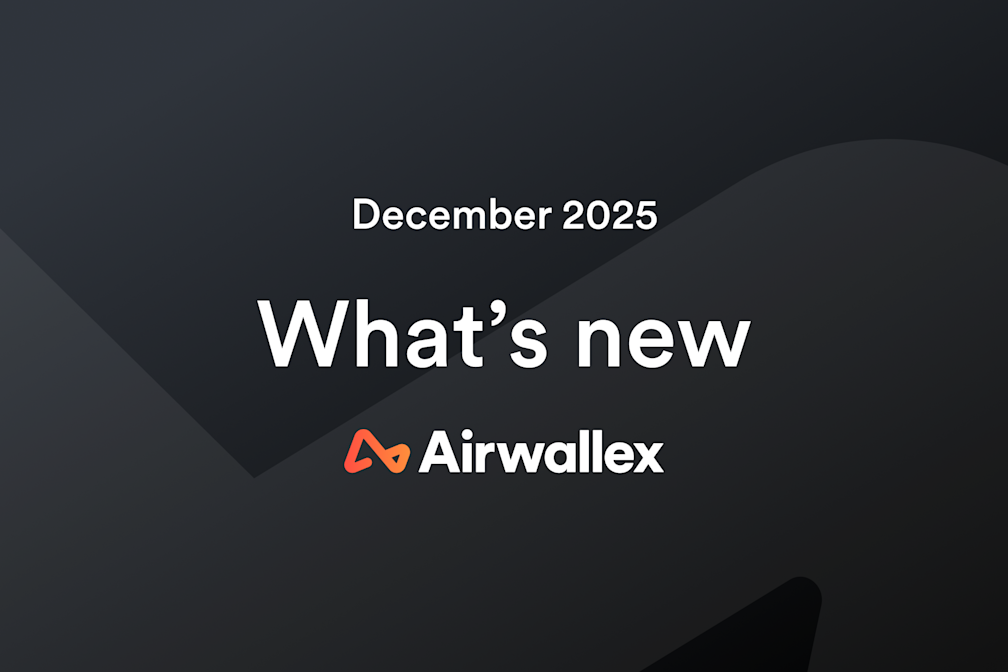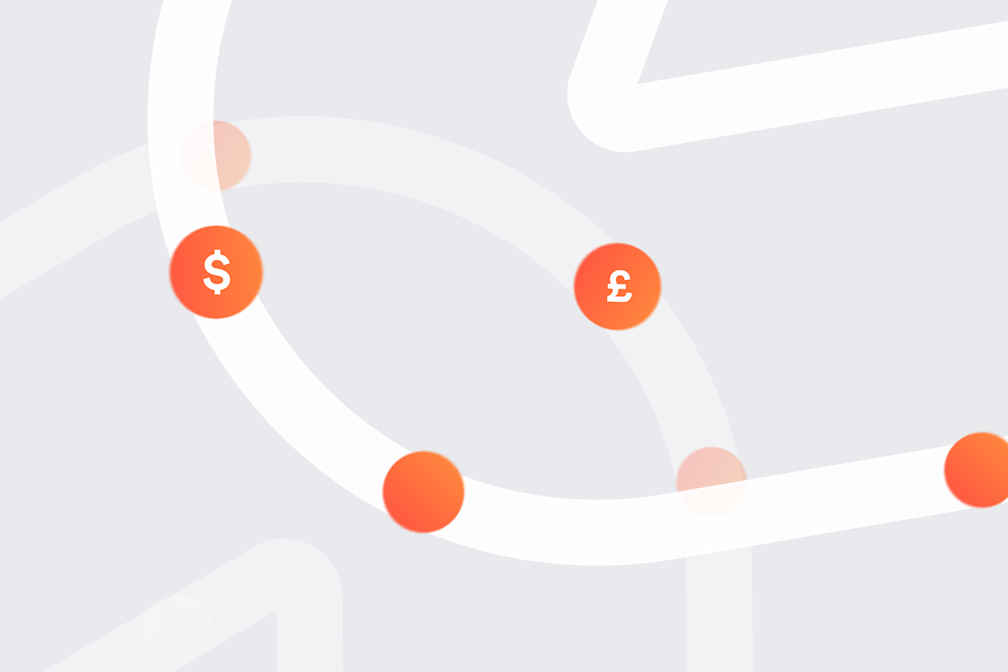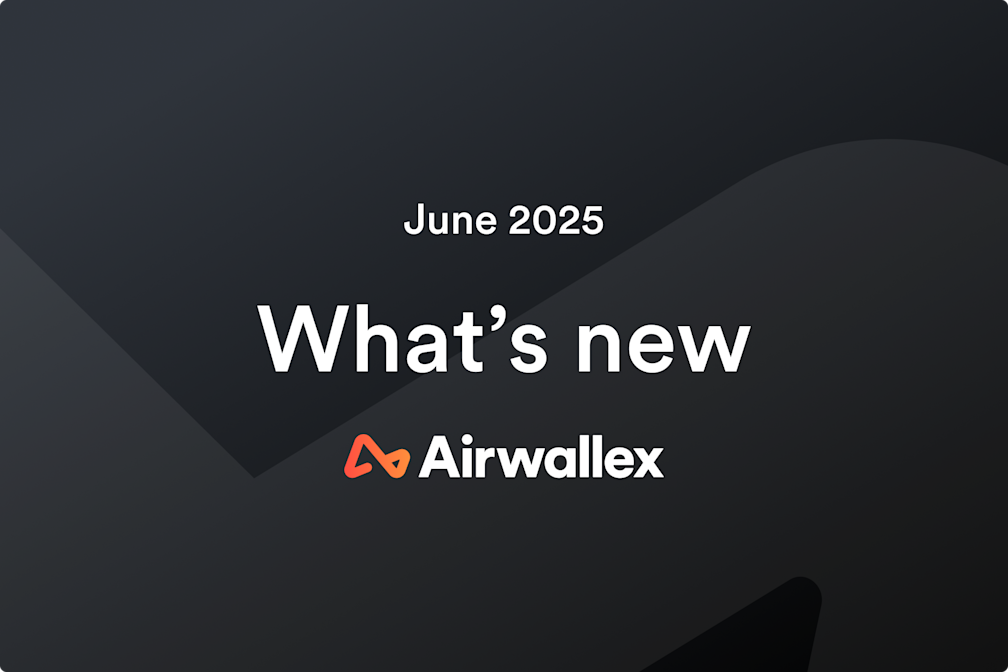Blog
Please select
Please select

Business banking
9 best business savings accounts and alternatives in SG (2026)
Looking for the best business savings account for your business? We compare the top 9 options & alternatives in Singapore based on features and fees.
Cherie Foo
•14 minutes

Finance operations
The Day Zero Finance mindset for businesses of all sizes
Find out why it's important to have a finance stack that scales with your business, how that looks like action, and what it takes to make that a reality.
Justin Yek
•6 minutes

Business banking
Revolut vs YouTrip (2025): Which is the best multi-currency account in Singapore?
Deciding between Revolut and YouTrip’s multi-currency accounts? Compare features and fees – and see how Airwallex fares as an alternative.
Rachel Tan
•12 minutes

Business banking
Best CIMB business account for Singapore businesses in 2025: features, fees, and alternatives compared
Considering CIMB for SGD-MYR transfers in 2025? Compare benefits and limitations and discover smarter alternatives for global businesses.
Rachel Tan
•17 minutes

Airwallex news
New at Airwallex: December Edition
Discover the latest product releases from Airwallex.
Shannon Scott
•3 minutes

Online payments
Is buy now, pay later (BNPL) the new normal?
Buy now, pay later (BNPL) boomed during the pandemic, but is it here to stay? Find out why customers are choosing BNPL, and what that means for you.
Regina Lim
•6 minutes

Business banking
Volopay business account review (2025): features & fees
Need a business account? Learn all about Volopay’s business account, including features, fees, and how it compares to alternatives like Airwallex.
Rachel Tan
•11 minutes

Business banking
PayPal Business Account review for Singapore SMEs (2025): Is this business account right for you?
Thinking of opening a PayPal Business Account in Singapore? Explore its 2025 features, fees, and drawbacks before you decide.
Rachel Tan
•9 minutes

Airwallex news
New at Airwallex: November Edition
Discover the latest product releases from Airwallex.
Shannon Scott
•3

Business banking
We reviewed Payoneer Singapore’s business account (2025): features, fees, and provider comparison
Need a business account? Learn all about Payoneer’s multi-currency account, including features, fees, and how it compares to alternatives like Airwallex.
Rachel Tan
•13 minutes

Online payments
Insights into digital trust in online payments, with Elliot Colquhoun
Balancing convenience, customer experience, and payment security in online transactions.
•2 minutes

Business banking
Wise Business Account review (2025): Features & fees
Need a business account? Learn all about Wise’s Business Account, including features, fees, and how it compares to alternatives like Airwallex.
Rachel Tan
•8 minutes

Business banking
MariBank Business Account (2025): Should you apply for a Mari Business Account? We review the account fees and features
Need a business account? Learn all about MariBank's Business Account, including features, fees, and how it compares to alternatives like Airwallex.
Rachel Tan
•13 minutes

Business banking
Revolut Singapore review (2025): Is this business account right for you?
Need a corporate debit card and account? Discover the features and fees of Revolut’s Business cards and account, and how they compare to Airwallex.
Rachel Tan
•11 minutes

Business banking
Statrys vs Airwallex (2025): Which is the best choice for Singapore companies? Features and fees compared
Looking for a business account in Singapore? We compare Airwallex’s all-in-one Business Account with Statrys’ upcoming account, covering features, fees, and which option actually works for your business today.
Rachel Tan
•9 minutes

Airwallex news
New at Airwallex: September Edition
Discover the latest product releases from Airwallex.
Shannon Scott
•3 minutes

Business banking
ANEXT Bank review for Singapore (2025): Is this digital bank the right choice for your business growth?
Need a business account? Learn all about ANEXT Bank’s Business Account, including features, fees, and how it compares to alternatives like Airwallex.
Rachel Tan
•7 minutes

Airwallex news
2025 mid-year mission update: Building the future of global banking
The future of global banking isn’t a distant dream – it’s unfolding right now, and it’s borderless, real-time, and intelligent.
Jack Zhang
•10 minutes

Procurement
Introducing Purchase Orders for Airwallex Spend
Introducing Purchase Orders for Airwallex Spend. Read the blog for a comprehensive overview of Purchase Orders.
Airwallex Editorial Team
•3 minutes

Business banking
Top 6 Revolut alternatives & competitors in Singapore (2025)
Looking for an alternative payment solution to Revolut for your business? Explore the top 5 alternatives and compare their features, fees, and benefits.
Rachel Tan
•13 minutes

Online payments
Net payment terms: A guide for businesses
Learn about net payment terms, their pros and cons, and their impact on businesses. See how to make and receive payments on time while matching these terms.
Regina Lim
•8 minutes

New at Airwallex: June Edition
Discover the latest product releases from Airwallex.
Airwallex Editorial Team
•3 minutes

